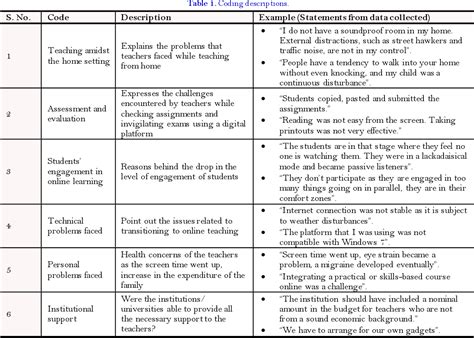In today’s rapidly evolving technological landscape, IT professionals play a pivotal role in driving innovation, empowering businesses, and shaping the future of the digital world. To achieve success and make a meaningful impact, IT professionals must set clear goals that align with the strategic objectives of their organizations and the evolving needs of their clients.

Objectives for IT Professionals
1. Enhance Technological Expertise:
- Stay abreast of emerging technologies and industry best practices.
- Acquire certifications and specialize in areas critical to organizational success.
- Explore new technologies through hands-on projects and research.
2. Foster Innovation and Creativity:
- Cultivate a mindset of continuous improvement and experimentation.
- Develop innovative solutions to complex business challenges.
- Collaborate with cross-functional teams to generate novel ideas.
3. Optimize Business Processes:
- Automate routine tasks to free up time for strategic initiatives.
- Utilize data analytics to identify areas for process improvement.
- Streamline workflows to enhance efficiency and productivity.
4. Ensure Cyber Security and Data Protection:
- Implement robust cybersecurity measures to protect against threats.
- Regularly conduct security audits and vulnerability assessments.
- Educate users on best cybersecurity practices.
5. Drive Digital Transformation:
- Assist organizations in adopting emerging technologies for business growth.
- Implement cloud computing, artificial intelligence, and other transformative solutions.
- Integrate technology into core business operations.
Goal-Setting Strategies
To set effective goals, IT professionals should:
- Align with Business Objectives: Understand the strategic priorities of the organization and align goals accordingly.
- Define Specific, Measurable Outcomes: Establish clear targets with quantifiable metrics.
- Prioritize Tasks: Focus on the most critical goals that will have the greatest impact.
- Establish Deadlines: Set realistic deadlines to create urgency and accountability.
- Monitor Progress and Adjust: Regularly evaluate progress and make adjustments as needed.
Measuring Success
The success of IT professionals can be measured through various metrics, including:
- Customer Satisfaction: Collect feedback from clients to gauge satisfaction with IT services.
- TechnologyAdoption: Track the adoption and utilization of new technologies within the organization.
- Operational Efficiency: Measure improvements in productivity, efficiency, and cost savings.
- Return on Investment: Calculate the ROI of IT projects and initiatives.
- Cybersecurity Effectiveness: Monitor key performance indicators (KPIs) related to cybersecurity measures.
Industry Trends Driving IT Goals
The following industry trends are shaping the goals of IT professionals:
- Cloud Computing: The adoption of cloud services is driving demand for cloud-native skills.
- Artificial Intelligence (AI): The rise of AI is creating opportunities for IT professionals to develop and implement AI-powered solutions.
- Cybersecurity: The increasing threat of cyberattacks is putting a premium on cybersecurity expertise.
- Data Analytics: The proliferation of data is driving the need for data analysts and data scientists.
- Digital Transformation: The shift to digital technologies is creating new roles and responsibilities for IT professionals.
The Power of Empathy
IT professionals should strive to understand the needs of their clients by asking questions and validating their perspectives. By putting themselves in their shoes, they can gain insights that lead to more effective solutions.
Case Study: Transforming a Retail Business
A retail company faced challenges with inventory management and customer checkout processes. IT professionals collaborated with business stakeholders to implement a cloud-based inventory system and a mobile point-of-sale (POS) solution. These initiatives resulted in:
- 20% reduction in inventory costs
- 15% increase in sales
- Improved customer satisfaction
Actionable Steps for Progress
To achieve their goals, IT professionals can take the following steps:
- Identify Knowledge Gaps: Determine areas where additional knowledge or skills are needed.
- Develop a Learning Plan: Create a plan to acquire new skills and knowledge through training, certification, or on-the-job experience.
- Seek Mentorship: Find a mentor who can provide guidance and support.
- Join Professional Organizations: Engage with industry associations and attend conferences to expand knowledge and network.
- Stay Informed: Regularly read industry publications, attend webinars, and participate in online discussions.
Conclusion
IT professionals play a vital role in driving innovation, optimizing business processes, and ensuring the security of the digital world. By setting clear goals and embracing a mindset of continuous learning, they can maximize their impact and contribute to the success of their organizations. By asking questions and empathizing with clients, they can develop solutions that truly meet their needs. The transformative power of technology, combined with the expertise and dedication of IT professionals, will continue to shape the future of business and society.
Table 1: IT Skill Gap
| Skill | Projected Gap by 2025 |
|---|---|
| Cloud Computing | 2.3 million |
| Cybersecurity | 3.5 million |
| Data Analytics | 2.2 million |
| Artificial Intelligence | 1.5 million |
| Software Development | 1.8 million |
Table 2: Industry Certifications for IT Professionals
| Certification | Issuing Organization |
|---|---|
| AWS Certified Cloud Practitioner | Amazon Web Services (AWS) |
| Certified Information Systems Security Professional (CISSP) | International Information System Security Certification Consortium (ISC)² |
| Microsoft Certified Solutions Expert (MCSE) | Microsoft |
| Oracle Certified Associate (OCA) | Oracle |
| CompTIA Network+ | CompTIA |
Table 3: Technology Adoption Rates
| Technology | Adoption Rate (2023) |
|---|---|
| Cloud Computing | 83% |
| Artificial Intelligence (AI) | 40% |
| Cybersecurity Measures | 75% |
| Data Analytics | 55% |
| Digital Transformation | 65% |
Table 4: Cybersecurity KPIs
| KPI | Description |
|---|---|
| Mean Time to Detect (MTTD) | Time taken to identify a security breach |
| Mean Time to Respond (MTTR) | Time taken to respond to a security breach |
| Incident Response Rate | Percentage of security incidents responded to within a specified time frame |
| Security Awareness Training Completion Rate | Percentage of employees who have completed security awareness training |
| Patch Management Compliance Rate | Percentage of systems that are up-to-date with security patches |
